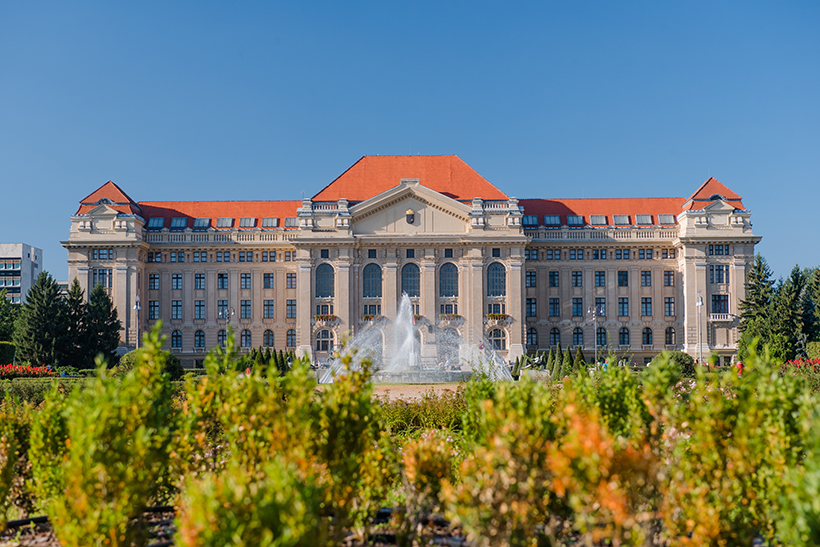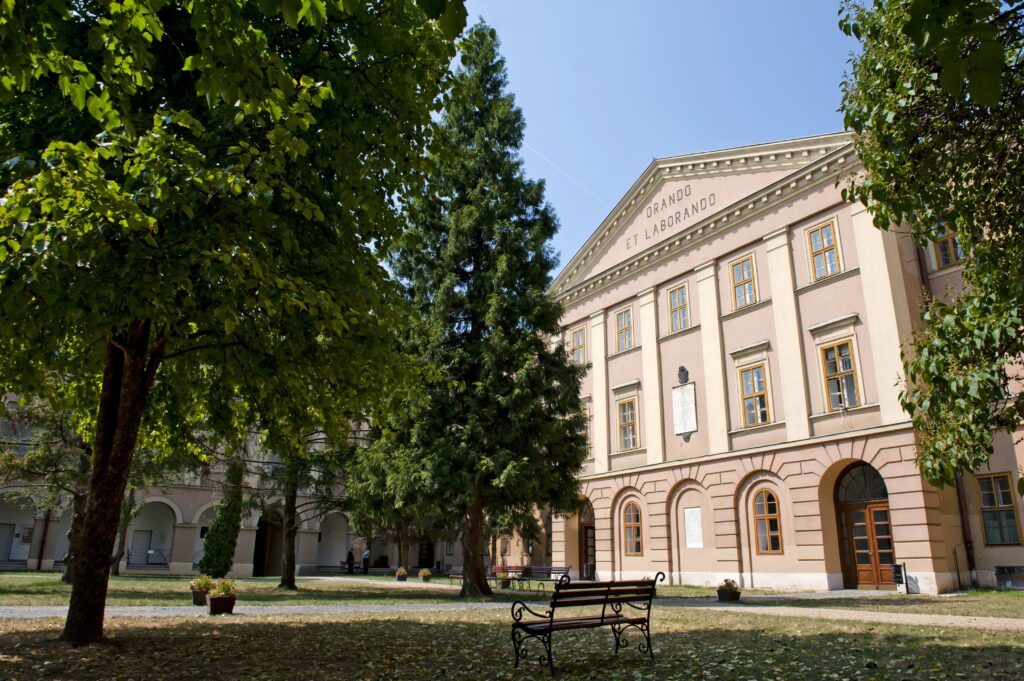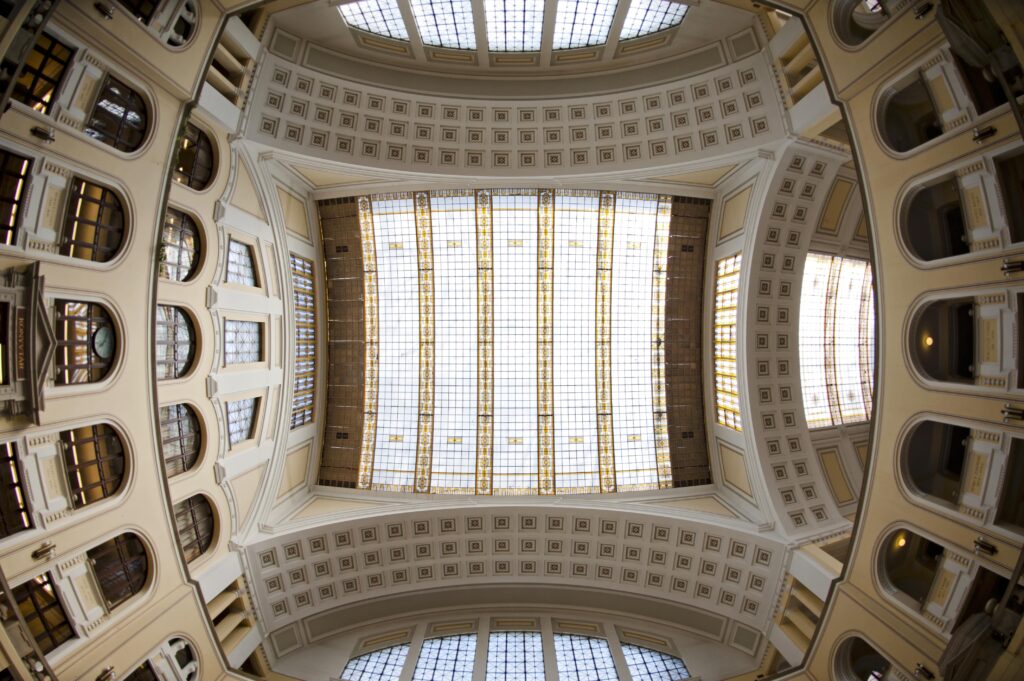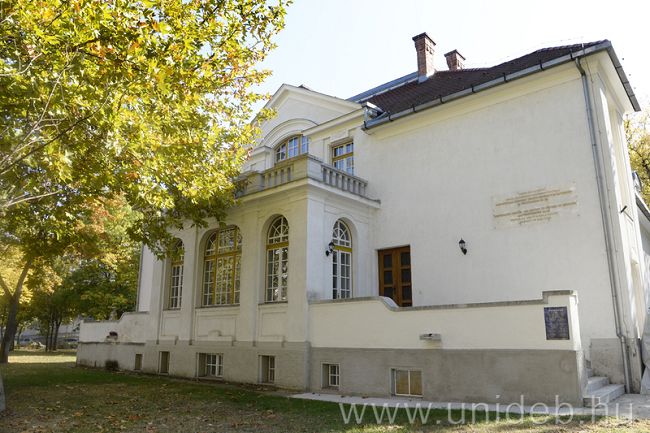Undoubtedly, one of the most beautiful buildings in Debrecen is the main building of the University of Debrecen. The neo-baroque building in Nagyerdő (Great Forest) is unique in terms of size, appearance and architectural solutions, and is not only the most beautiful university building in Debrecen, but also in the country and in Europe.

FOUNDATION
Although the university was founded in 1912, its roots go back to the 16th century. During the 16th and 17th centuries there was growing demand for post-secondary education. The Reformed College, which had been in operation since 1538, certainly had an higher/upper education department at the end of the 16th century, and where more and more students studied over the centuries.
The transformation of the College into a university became the goal, not only of the citizens of Debrecen, but also of the entire Hungarian Reformation, and so when an academy of humanities, law and theology was established in the heart of the College at the end of the 19th century, it was on this basis that the Hungarian Royal University of Debrecen was establishment in 1912.
Thus, as Bishop Dezső Baltazár put it, the “granite stones” of the College were built into the foundations of the state university, which was born in 1912, so the more than a hundred-year-old University of Debrecen rightly considers itself the heir of the College since 1538 .

BUILDING
With the founding of the Hungarian University of Debrecen in 1912, large-scale construction began in the city. Debrecen donated a huge area to the university for the establishment of the central building and the clinical hospitals, the construction of which was accompanied by the construction of the existing professor villas . Architect György Dénes dreamed up the teacher’s flats in a style suitable for the neo-baroque main building designed by Flóris Korb .
In the words of Zoltán Rácz, an architect from Debrecen, the style of these smaller castles, which were inhabited by the professors of the university in their “well-organized, somewhat expansive apartments”, they elevated the representatives of science to the rank of aristocracy, as is Dénes Györgyi’s other significant work, the Déri Museum”.
Today, the villa next to the university church is not a professor’s apartment, but the Erasmus office, the FM90 Campus Radio studio and the editorial office of University Life.

MIKSA RÓTH AND ORNAMED GLASS WINDOWS
The construction of the university buildings and the clinical site was directed by the designer himself, Flóris Korb, who often worked with the famous glass painter and mosaic artist Miksa Róth (including the Academy of Music, the Royal Wage Palace and Klotild Palaces).
During the two decades of construction in Debrecen, Miksa Róth worked not only as a glass painter, but also – in today’s words – as an interior designer. Róth’s work is the dome of the Courtyard of the University of Debrecen and the five huge, 20-square-meter glass paintings of the Hall. also on which he immortalized the historical relations of the Reformed College. The glass windows were destroyed by the shock wave from bombing during September of 1944, but were reconstructed for the 100th anniversary of the founding of the university, in 2012, based on contemporary photos and the original plans of the Róth Miksa Memorial House.

KENÉZY VILLA
It is well worth exploring the campus, as we can discover many smaller “palaces” next to the main building. In the area of the Clinics, it is worth visiting the Kenézy Villa, also built in 1926 according to the plans of Flóris Korb, which was built in parallel with the workplace of Gyula Kenézy, an obstetrician-gynecologist, university professor and the obstetrics clinic. Just as in the in the palaces surrounding the main building, the purpose of the construction here was for the doctors to live near their workplace with their families. Kenézy himself lived here until his retirement, followed by several professors.
Today, the building houses an event center and a Professors’ Club, but it also houses a large medical collection. which presents the history of medicine and medical professions in Debrecen with more than half a thousand exhibits and documents from ages past.
